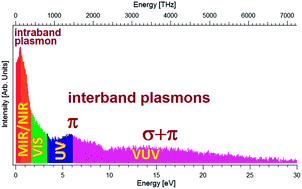Plasmon modes in graphene: status and prospect
Abstract
Plasmons in graphene have unusual properties and offer promising prospects for plasmonic applications covering a wide frequency range, ranging from terahertz up to the visible. Plasmon modes have been recently studied in both free-standing and supported graphene. Here, we review plasmons in graphene with particular emphasis on plasmonic excitations in epitaxial graphene and on the influence of the underlying substrate on the screening processes. Although the theoretical comprehension of plasmons in supported graphene is still incomplete, several experimental results provide clues regarding the nature of plasmonic excitations in graphene on metals and semiconductors. Plasmon in graphene can be tuned by chemical doping and gating potentials. We show through selected examples that the adsorbates can be used to tune the plasmon frequency, while the intercalation of chemical species allows the decoupling of the graphene sheet from the substrate to recover the plasmon dispersion of pristine graphene. Finally, we also report intriguing effects due to many-body interaction, such as the excitations generated by electron–electron coupling (magnetoplasmons) and the composite modes arising from the coupling of plasmons with phonons and with charge carriers.


 Please wait while we load your content...
Please wait while we load your content...